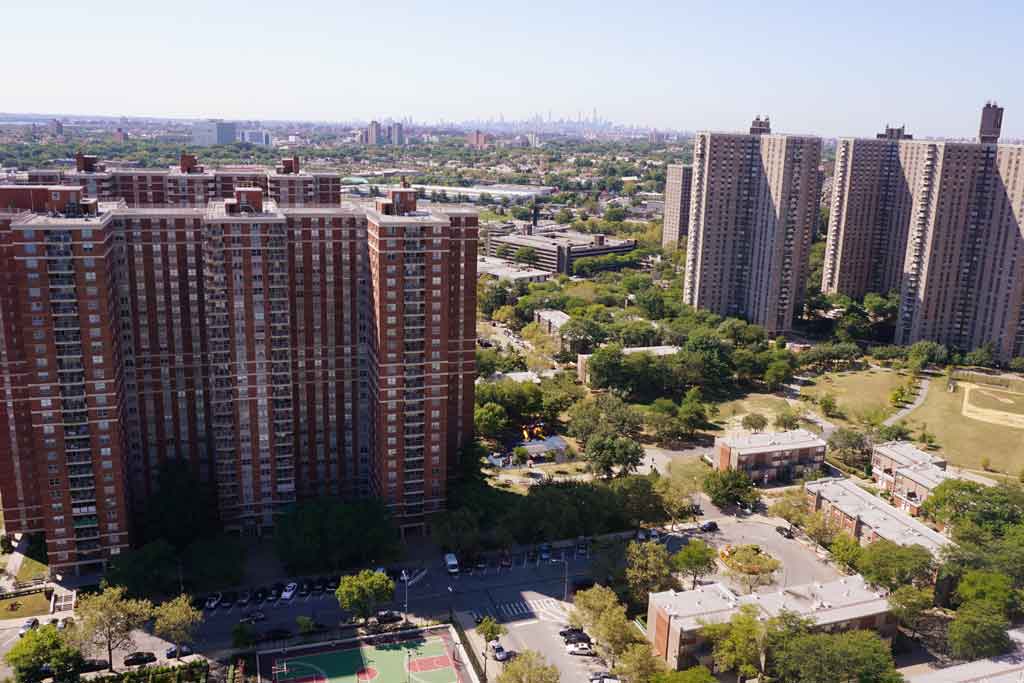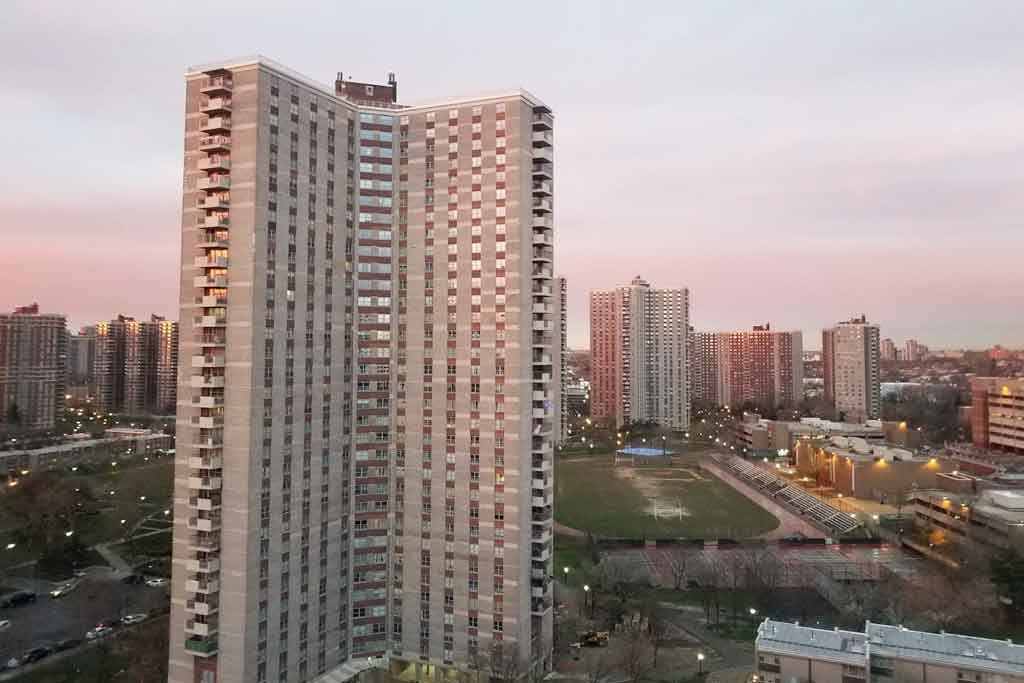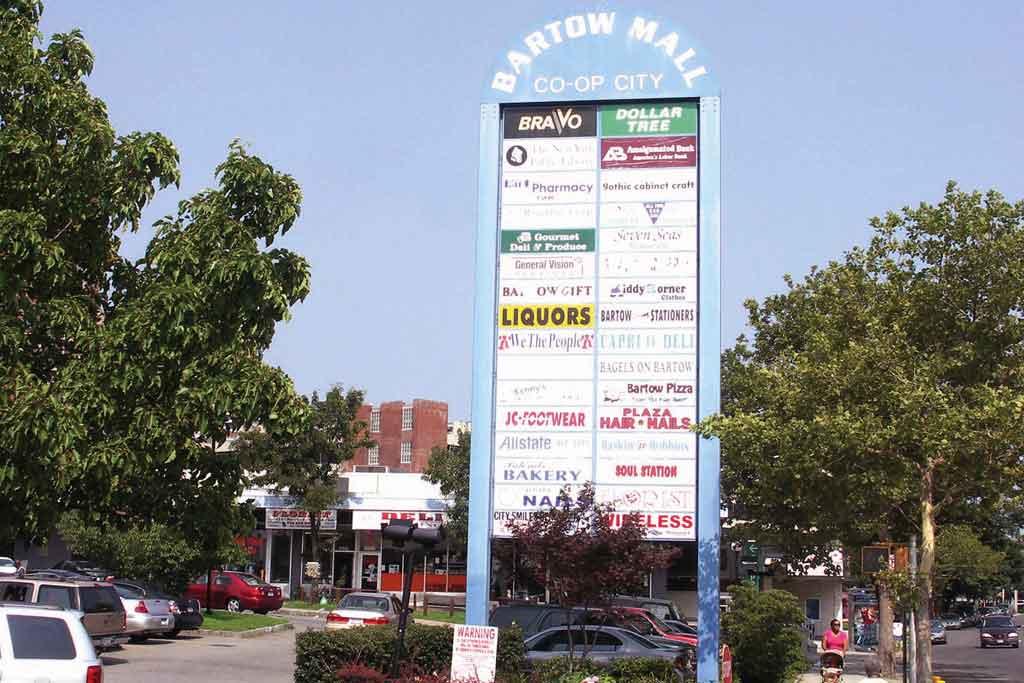In December 2018, Co-op City celebrated its 50th anniversary as “the largest cooperative housing community in the nation” that stands “as a beacon of affordability, diversity, and cooperativism.”
The development was conceived by Abraham E. Kazan and sponsored by the United Housing Foundation (UHF), a coalition of labor unions established by the Amalgamated Clothing Workers of America (ACW). Kazan later became Co-op City’s first president.
ACW president Sidney Hillman had successfully won Governor Al Smith’s support for the passage of the New York State Housing Act of 1926, which offered a 20-year tax exemption to limited-dividend corporations. In 1927, several decades before plans for Co-op City were on the drawing board, ACW developed its pioneer apartment complex, Amalgamated Housing Cooperative, a limited-equity multi-unit residence in the northwest Bronx, providing affordable housing for hundreds of families. The guiding force behind that project was Kazan.
Herman Jessor, Kazan’s chief architect, had already designed over 40,000 units for different projects sponsored by ACW and UHF. He, like Kazan, was an advocate for affordable housing for working people. Jessor believed in utilizing modern technology and insisted that his designers focus on speed and economy, a practice that significantly lowered cost.
The concept of building Co-op City became a reality with the passage of Article II of the Private Housing Finance Law (better known as the Mitchell-Lama Law) in 1955 and the establishment of the state’s Housing Finance Agency (HFA). This body had the authority to sell low-interest, tax-free bonds to finance the building of Co-op City. Under the Mitchell-Lama (M-L) program, a total of 95,000 units in New York City, as well as upstate New York, came into being. The agency financed 90% of the construction cost of Co-op City.
The core mission of the M-L program was to build housing for middle-income working families, who were caught in a financial no-man’s land where, on one hand, they earned too much money to qualify for public housing, but on the other, could not afford to buy or rent on the open market. (M-L applicants were subjected to a maximum-income limitation.)
In the mid-1960s, Jacob Potofsky, then-president of ACW and head of Co-op City’s sponsoring group, UHF, campaigned for and won the support of Governor Nelson Rockefeller and Mayor Robert Wagner (and later, of Mayor John Lindsay) to build Co-op City. Among those who wielded shovels at Co-op City’s groundbreaking, on May 14, 1966, were some of the state’s most illustrious figures: Rockefeller, Lindsay, Co-op City President Kazan, Potofsky, then-Bronx Borough President Herman Badillo and Robert Moses, chairman of the Triborough Bridge and Tunnel Authority. Also included among those wielding shovels were the children of Co-op City applicants.
Co-op City’s principles, which its shareholders have supported for half a century, include the following:
- To serve, not profit from, its residents.
- To maintain a cap on equity—apartments cannot be resold on the open market.
- To remain cooperative, owned by its cooperators and free of landlords.
Another of Co-op City’s principles is a policy of non-discriminatory diversity, a principle that is reflected in the findings of the 2010 Census which showed the community’s demographic composition as follows:
| Young people (less than 19 years old, 8,500) |
20% of the total Co-op City population |
| African Americans |
60.5% |
| Hispanics |
27.7% |
| Whites |
12.5% Others |
| Others |
10.5% |
One other notable feature of Co-op City is that it is the largest Naturally Occurring Retirement Community (NORC) in our nation: approximately 19,000 cooperators who are over 62 years old – many of whom have aged in place – live in the development, constituting nearly half (47%) of Co-op City’s entire population.
Diversity has played a role in making Co-op City a multi-generational, multi-ethnic, multi-religious, middle income cooperative. Other amenities that enhance the lives of shareholders include the park-like setting – 80% of the land remains open space.
Co-op City apartments are airy and spacious, with A/C, modern fixtures and flooring. The community operates three shopping centers, three community centers with meeting rooms and auditoriums and eight parking garages. On the grounds, there are also childcare centers, playgrounds, a public library and even an outdoor stage as well as a fire house; a former, but now vacant, cinema; and the only education park in New York City.
Co-op City also has the largest, non-utility company – a state-of-the-art trigeneration power plant that produces heat, hot and chilled water (for A/C during the summer) and electricity for the development. Charges for gas, water, electricity, and air conditioning are all included in shareholders’ monthly carrying charges. The community also has its own public safety department and weekly newspaper, the Co-op City Times.
Like all Mitchell-Lama cooperatives, Co-op City is supervised by the state’s division of Housing and Community Renewal (HCR). Riverbay Corporation, the corporate entity of Co-op City, receives a shelter-rent tax abatement, and senior citizens and cooperators with disabilities may be eligible for carrying charge increase exemptions through the city’s Senior Citizen Rent Increase Exemption (SCRIE) and the Disability Rent Increase Exemption (DRIE).
Over the last 50 years, Co-op City shareholders have continued to support state funding of original construction defects and stress the necessity of keeping their homes affordable. Shareholders join in honoring the legacy they inherited from earlier generations of cooperators by being prepared to continue the fight that has made their development what it is today – a thriving community that’s still the best deal in town!
View Less







